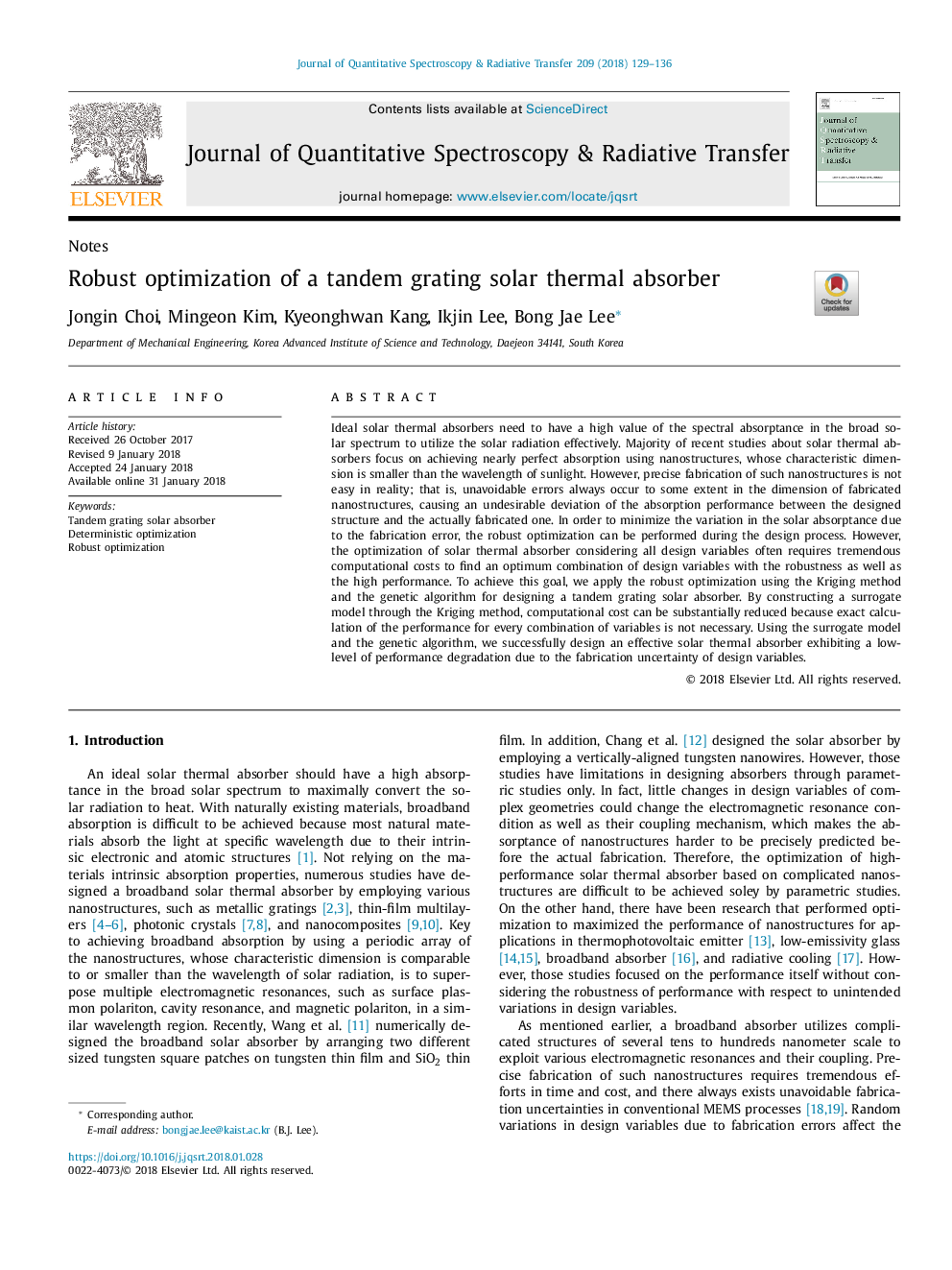| Article ID | Journal | Published Year | Pages | File Type |
|---|---|---|---|---|
| 7846143 | Journal of Quantitative Spectroscopy and Radiative Transfer | 2018 | 8 Pages |
Abstract
Ideal solar thermal absorbers need to have a high value of the spectral absorptance in the broad solar spectrum to utilize the solar radiation effectively. Majority of recent studies about solar thermal absorbers focus on achieving nearly perfect absorption using nanostructures, whose characteristic dimension is smaller than the wavelength of sunlight. However, precise fabrication of such nanostructures is not easy in reality; that is, unavoidable errors always occur to some extent in the dimension of fabricated nanostructures, causing an undesirable deviation of the absorption performance between the designed structure and the actually fabricated one. In order to minimize the variation in the solar absorptance due to the fabrication error, the robust optimization can be performed during the design process. However, the optimization of solar thermal absorber considering all design variables often requires tremendous computational costs to find an optimum combination of design variables with the robustness as well as the high performance. To achieve this goal, we apply the robust optimization using the Kriging method and the genetic algorithm for designing a tandem grating solar absorber. By constructing a surrogate model through the Kriging method, computational cost can be substantially reduced because exact calculation of the performance for every combination of variables is not necessary. Using the surrogate model and the genetic algorithm, we successfully design an effective solar thermal absorber exhibiting a low-level of performance degradation due to the fabrication uncertainty of design variables.
Related Topics
Physical Sciences and Engineering
Chemistry
Spectroscopy
Authors
Jongin Choi, Mingeon Kim, Kyeonghwan Kang, Ikjin Lee, Bong Jae Lee,
